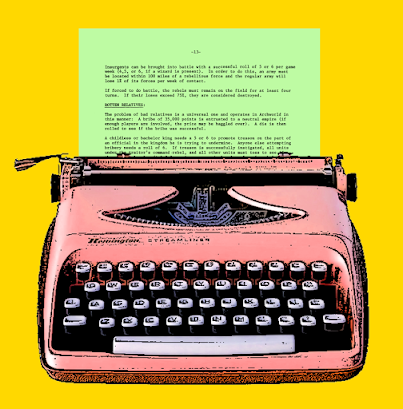When I discovered D&D in 1978, it was love at first sight. But it didn't take long for me to see what appeared to be bruises on the apple. Some rules seemed arbitrarily limiting, while others came off unnecessarily, and perhaps sadistically, harsh. I took notes, and two years later, with Christmas and Holmes Basic, I houseruled my perfect game. We had fun. There's no wrong answer here. But time sure flies, and it turns out the rules were right...
I used to think one spell at first level was too few (an argument can still be made). Now I understand that players contribute ideas as well as power. I said hey, a first-level fighter can swing their sword as much as they want. No fair. Now I understand that a novice warrior could die after a single attack against them - not unlike that single spell.
And I used to believe that level limits for non-humans were discriminatory. Why can't an ancient, magical elf enjoy unlimited advancement. A few decades later, I came to appreciate just how front loaded that elf really is. And how powerful they are casting Fireball in magic platemail. I'm sure many a wizard envies their -1 armor class. Anyway, multiclassing doubles their power, so these limits are all that stands in the way of an elven dominion.
Once upon a time, I swore that level draining and save or die were too harsh. Again, an argument can be made; but I get it now. You aren't supposed to fight everything, especially if there isn't any treasure to be won. Undead are what the cleric's there for. And maybe you save your (one) fireball for those level-draining wights. Or avoid engaging poisonous spiders in melee. Avoidance is free and quite possibly the best weapon ever...
And so I houseruled in defiance of these indignities. Magic-users got more spells. Non-humans were unleashed. Level draining never happened. It was fun. I mean, there's more than one way to play. Pits & Perils channels these little rebellions, although seasoned by experience and a growing appreciation for why the old ways actually worked.
Gygax and Arneson designed a game that put the players and their ingenuity ahead of the power of their characters; and even when these heroes reached higher levels, it only worked when said power was used wisely. No man was an island. Teamwork meant the difference between life and death, and choosing not to fight was every bit as vital to a character's future advancement as drawing swords or casting spells. Here, strategy ruled...
In the decades since, I've seen D&D drift to something a lot like my youthful rebellion, complete with superhero characters and one hell of a safety net. Kids, right? But they don't own this. I know a kid or two (I'm guilty) who pushed this as early as 1978. Players are programmed to advance their cause, and young people are so full of the possibilities they can't help themselves. But lately, I've come to appreciate the wisdom of the ancients.
















